On the evening of March 27, a crowd of more than 150 joined RECORD at the global flagship design studio of Brickworks, parent company of brick and stone manufacturer Glen-Gery, in Midtown Manhattan for the latest New York edition of Record on the Road. Entitled “Industrial Strength: Adaptive Reuse,” the event marked this year’s first gathering in the multi-city educational series—each edition is anchored by a themed editorial symposium—following successful 2023 programs in Atlanta, Los Angeles, Boston, and New York.
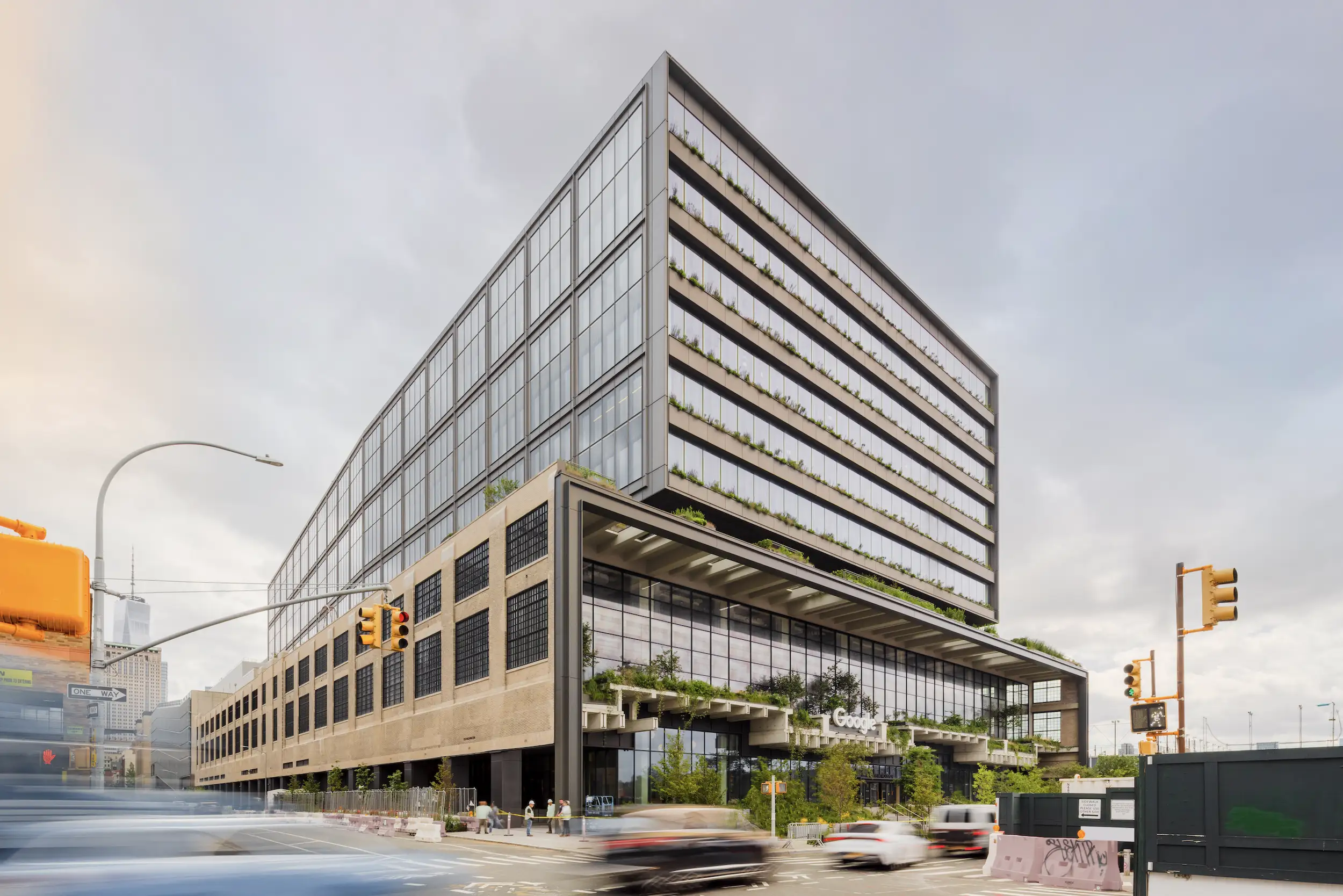
St. John's Terminal, Manhattan. Photo courtesy Google
As relayed in the name of the event, the focus was on the transformation of industrial buildings in New York—specifically hulking, workhorse edifices erected in the late 19th and early-20th centuries on the waterfront-abutting fringes of both Manhattan and Brooklyn. Featured speaker Rick Cook, founding partner of COOKFOX Architects, presented two projects including St. John’s Terminal, the recently opened new headquarters of Google’s Global Business Operation housed within—and atop—a sprawling brick-clad structure built in 1934 as the southern terminus of a long-defunct elevated freight rail line that once skirted Manhattan’s West Side (famously reborn as the High Line). Roughly two miles to the north of St. John’s Terminal in the West Chelsea Historic District, another ambitious COOKFOX-led adaptive reuse project is currently underway at Terminal Warehouse, a rail-linked 1891 freight storehouse that many New Yorkers—at least those around during the 1980s and 90s—know best as the former site of the notorious Tunnel night club. That building is currently being converted into a 1,150,000-square-foot “groundscraper,” complete with a lush courtyard inserted into its center, for commercial office tenants.
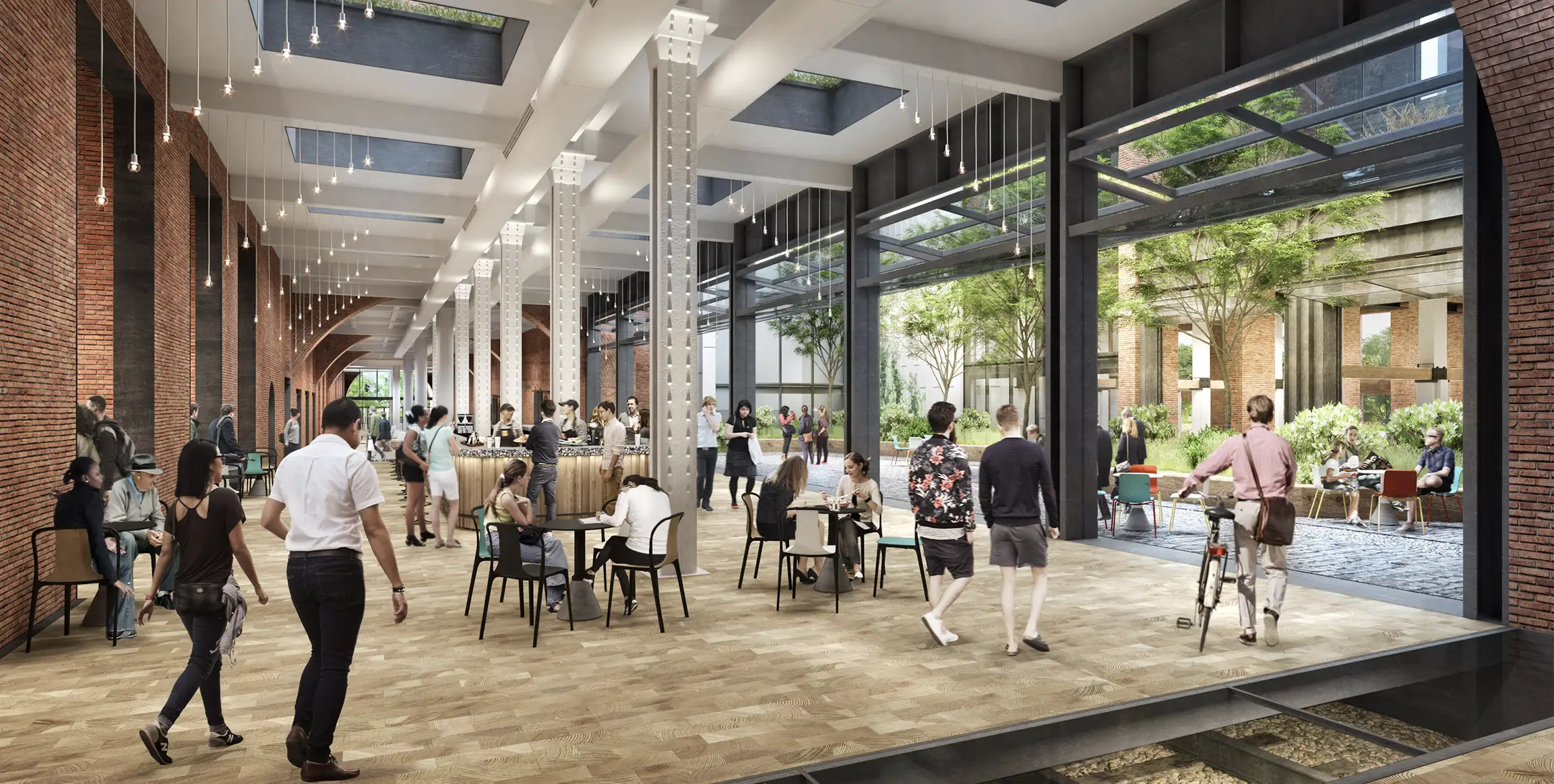
Rendering of Terminal Warehouse with view of interior courtyard, Manhattan. Image courtesy COOKFOX Architects
Joining Cook as the evening’s second featured speaker was Philip Schmerbeck, associate at Herzog & de Meuron and studio director of the Swiss firm’s U.S. office, who discussed his work at Powerhouse Arts, a bustling, purpose-built arts fabrication hub housed partially within the revived ruins of a long-abandoned 1904 power station perched on the banks of the Gowanus Canal in Brooklyn.
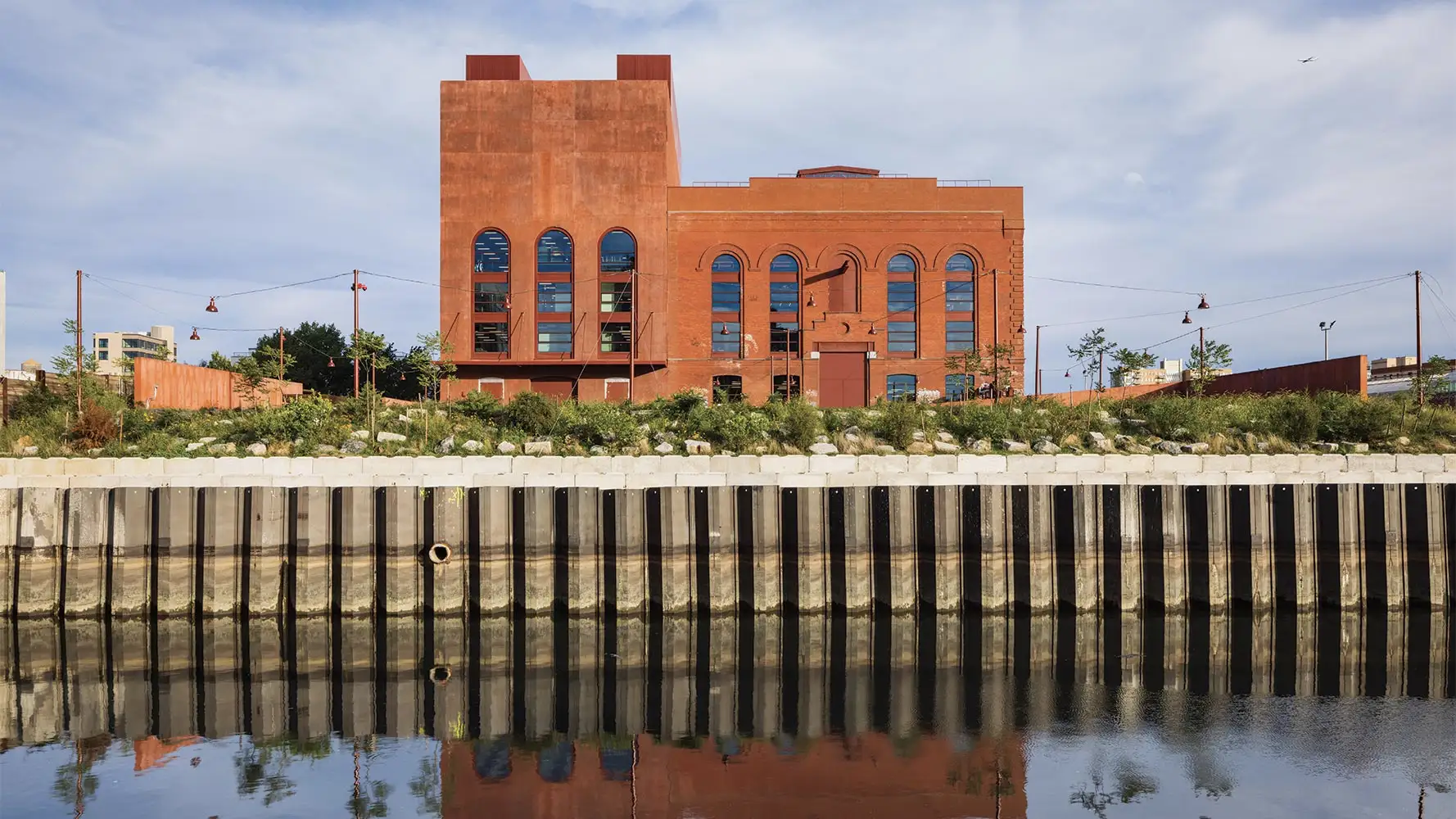
Powerhouse Arts, Brooklyn. Photo © Albert Vecerka/Esto
Following welcome remarks from RECORD publisher Alex Bachrach, the evening kicked off with sponsored CE sessions exploring myriad adaptive reuse projects involving terrazzo, presented by the National Terrazzo and Mosaic Association, and ways of reducing the carbon footprint of laminated glass with structural interlayers, presented by Kuraray.
Cook presented next, telling the assembled crowd that the night’s focus on adaptive reuse touched down on one of his favorite topics: the stewarding of resources. “I think that historic preservation and environmental conservation are sister stewardship ethics,” he said, before giving a brief overview of the development of Manhattan’s West Side, which flourished as a hurly-burly industrial zone along the Hudson River, suffered through a period of decline in the late 20th century, and then experienced an eventual renaissance as one of New York’s trendiest—and most prohibitively priced—neighborhoods. “It’s been incredible building atop these connections,” said Cook of St. John’s Terminal and its past life as a “connector” between ocean and ground transportation—an integral part of a rail system that, although long gone, played a formative role in the city’s development. “I think architecture is the art of connections.”
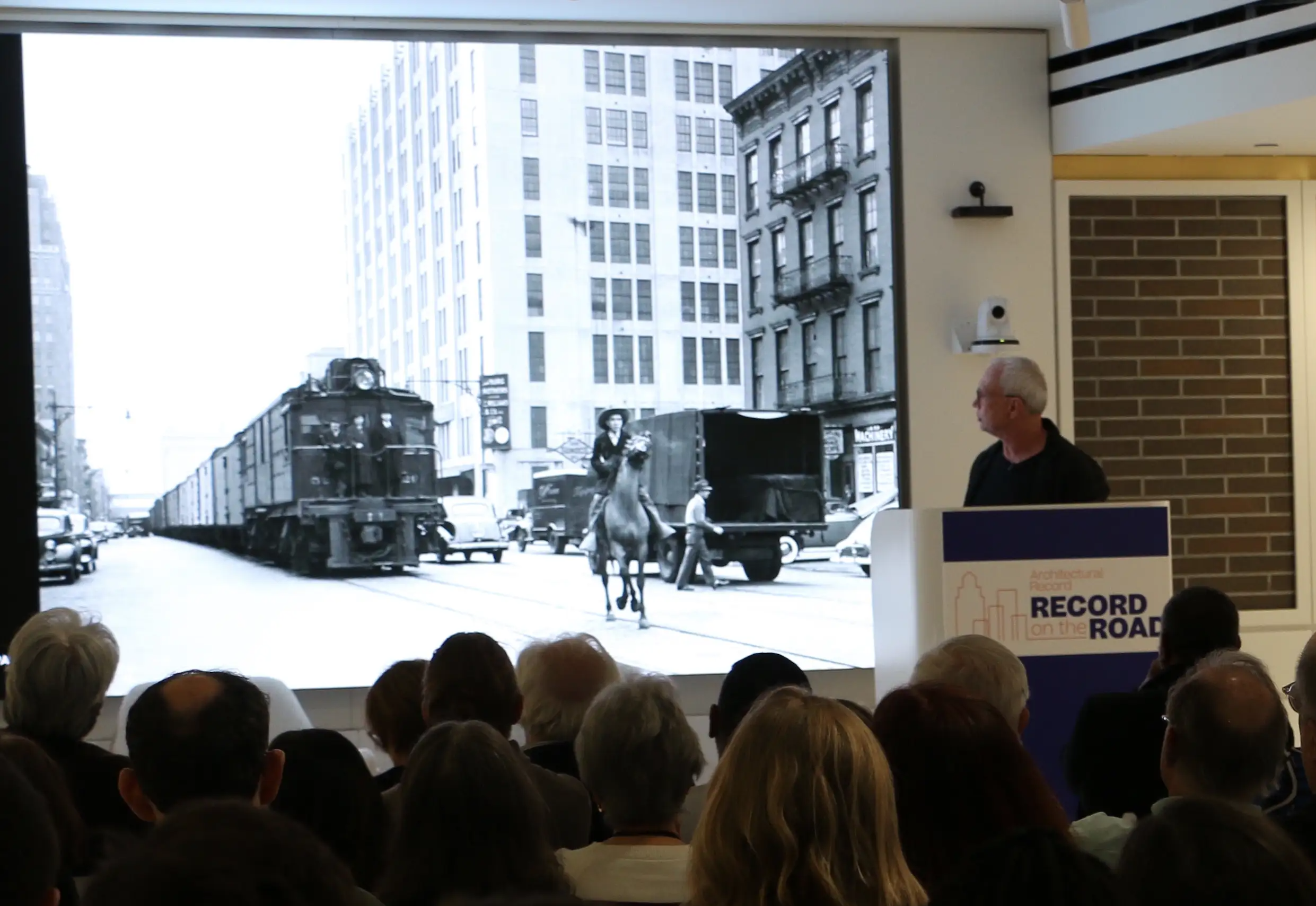
1
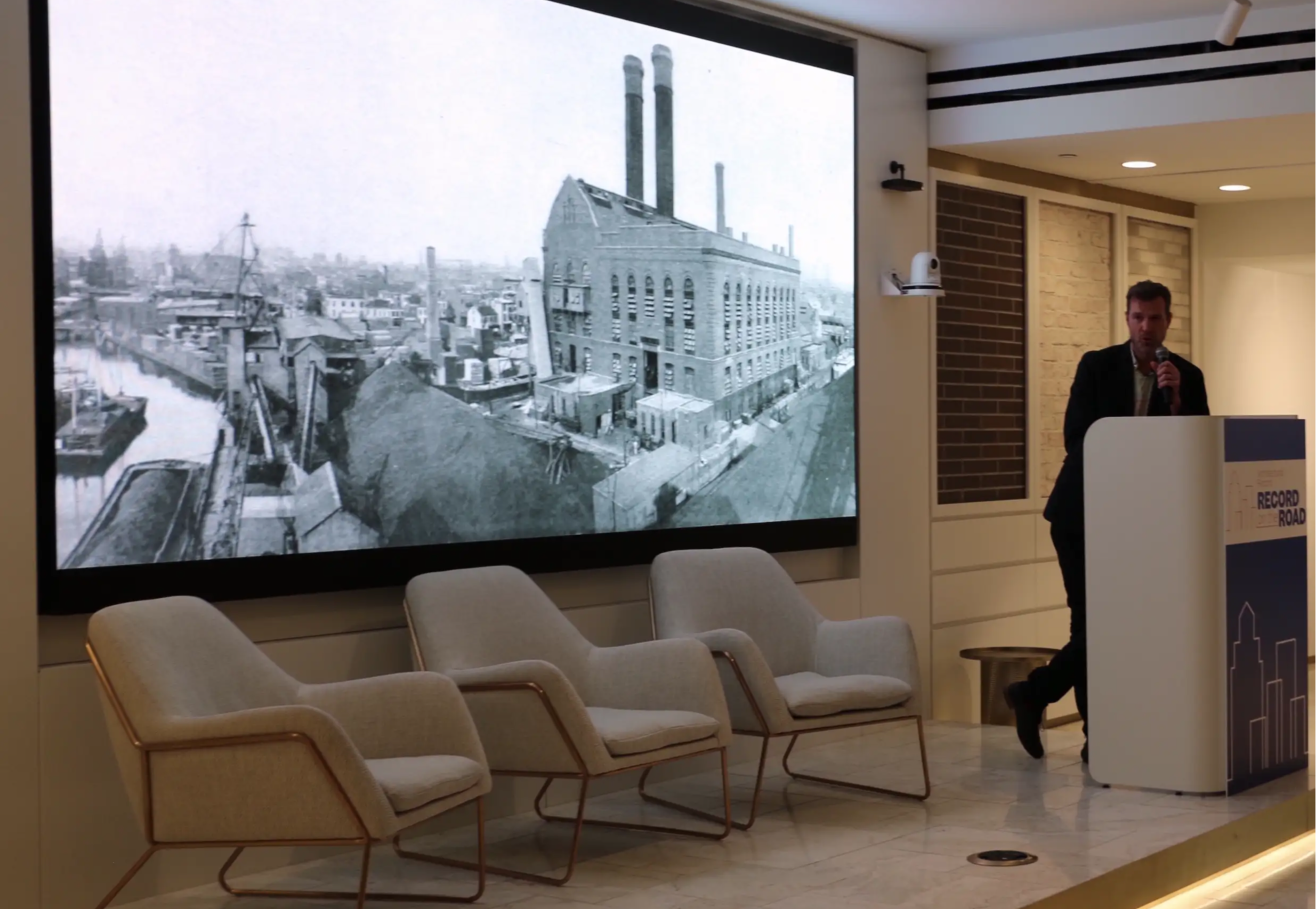
2
Cook shows an archival photo of a busy street on Manhattan’s West side prior to the arrival of elevated freight rail lines (1); Schmerbeck presents an archival photo of the canalside power station in Gowanus, Brooklyn, that’s now home to art fabrication facility Powerhouse Arts (2). Photos by Pansy Schulman, Architectural Record
Schmerbeck kicked off his presentation discussing the inherent sustainability of resuscitating old buildings for reuse as an alternative to new construction—even if said old buildings, such as Powerhouse Arts, are located next to famously fetid waterways and pose numerous hurdles, both logistically and financially, in the effort to revive them. “This was a rare opportunity to actually maintain industrial use for an industrial building,” said Schmerbeck, noting that the main challenge of the project was to “inject a very ambitious program of 170,000 square feet of art fabrication space for various media into a building [the surviving turbine hall] that only had 6,000-square-foot capacity and half its original volume.” (The power plant’s long-ago-demolished boiler house was rebuilt atop its original foundation adjacent to the turbine hall using contemporary methods.)

Record Editor in Chief Josephine Minutillo in conversation with Schmerbeck and Cook. Photo by Pansy Schulman, Architectural Record
Next, Cook and Schmerbeck joined RECORD editor in chief Josephine Minutillo for a conversation that touched down on several themes in their presentations including specific technical challenges, notable “nasties” unearthed during construction work (including barrels and barrels filled with black sludge), and the emotional reaction that old buildings, no matter their state, tend to elicit.
“Modern architects have a lot of fun riffing off of old buildings,” Cook said. “It gives you a starting off point for your own creativity—instead of a blank slate, you already have something to work with. I think there’s also a psychological comfort in working with something that has a specific emotional connection to a place.”
RECORD will hold its next edition of Record on the Road on April 17 at the Massachusetts Institute of Technology’s MIT Media Lab. The special half-day event, Sustainability in Practice, will include featured speakers Carol Ross Barney, Mario Cucinella, Felix Heisel, and 2024 AIA Gold Medalists David Lake and Ted Flato.


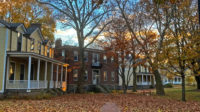

Post a comment to this article
Report Abusive Comment